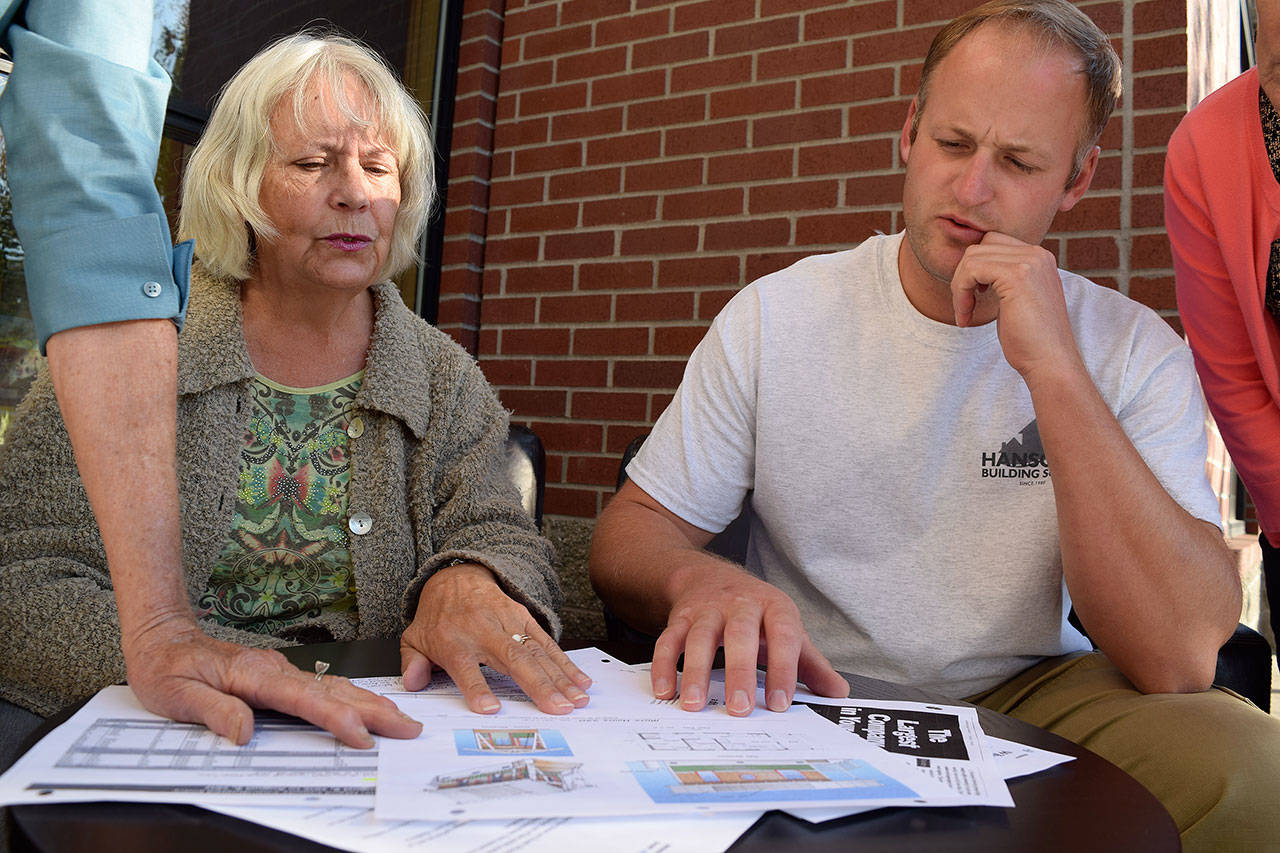It’s regularly said that affordable housing is one of the leading issues Island County residents face, and discussions over how to address the issue is an ongoing point of contention.
However, a group of churchgoers is laying the groundwork to provide affordable housing in the future.
Tiny Houses in the Name of Christ, or THINC, is a non-profit organization with the goal of attaining or purchasing property to build a cluster of tiny homes. The houses, which would measure 220-square-feet each, would be set aside for the homeless or those at-risk of becoming homeless.
“All of us in the organization have either housed or met the homeless and it opens up your eyes to the need on our island,” said Coyla Shepard, a board member. “When we realized how serious of an issue it was, we started going to meetings on homelessness and educating ourselves. This came out of that.”
THINC aims to start on its tiny house project as soon as possible, but its need for property is preventing any groundbreaking from happening yet. The organization hopes to acquire land donated from a property owner, but it’s ready to raise the funds needed to buy land, if necessary. Visit www.thincwhidbey.org for details on how to donate.
“The goal is to find a property owner who might want to leave a legacy in their name,” Shepard said.
The organization hopes to start with a six-to-12 house cluster on at least one-third of an acre. The organization estimates it could theoretically fit 24 tiny houses on a full acre, if a city planning department allows it. According to the blueprints, made by South Whidbey-based architect Mike Burroughs, the houses are 22 feet long, 10 feet wide and 10 feet, 6 inches tall and could fit up to four people. Each tiny house includes a room, kitchen, living room and front porch.
THINC is composed of board members from seven churches, and each pledged to raise funds to build a tiny house. According to Shepard, they cost about $10,000 to construct.
Since the property must be connected to a sewage and water system in order to save septic costs, the property must be in Langley. Eileen Harper, THINC’s secretary, says the city’s planning committee has been open to the construction of tiny houses and “more innovative housing” to address South Whidbey’s need for affordable housing.
Harper says it’s crucial for Whidbey Island to have more affordable housing options, and there are many reasons renters are being pushed out of their homes.
“We’re looking to house not only the homeless, but people who have been pushed out of the rental market due to high rental prices, rentals becoming AirBnbs and the naval base adding 1,700 recruits,” Harper said.
According to statistics provided to THINC by Island County Housing Support Center, Whidbey Island has 171 homeless individuals and 246 more who are at-risk of becoming homeless. The housing support center also estimates a person must make $18 an hour working full time to afford a $1,000 monthly rent. Considering many work part time during the off-season and the fact that rentals under $1,000 are tricky to find, THINC says, making that much money is out of reach for many.
Recognizing some may have concerns about the tiny house residents, Harper and Shepard say there will be strict guidelines for people to live in the tiny house community. Openings will be limited to Whidbey residents, and THINC will run background checks and go through an interview process. Rents will likely be on a sliding scale according to need, Shepard says.
“We have a lot of checks and balances to make sure the people living there will be good neighbors,” Shepard said.
THINC built a tiny house community model that could be easily and quickly replicated, with the hope others would follow suit and build tiny houses of their own. Burroughs’ model is transportable and a house could be built “within a week,” according to THINC board member Adam Breedlove. The board realizes its plans wouldn’t solve the problem, but it’s a step in the right direction.
All THINC needs to break ground is a property to build on.
“Our starting point is having a model that people could easily replicate, with the hope others would build their own tiny houses,” Harper said.
“We know we can’t serve everybody, but we can at least start,” Shepard said.



